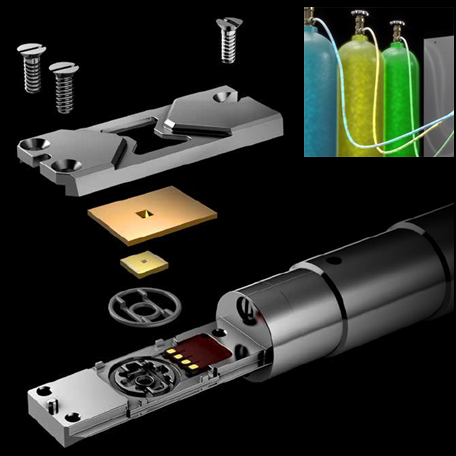Method Development
We are focusing on three main methdology areas in repsonse to the needs of our collaborations partners, developing approaches for dedicated structural and functional analysis of materials at the atomic or nanoscale.
In-situ and operando TEM provides a direct link between structural evolution and materials properties or function and the ability to identify transient structures, which cannot be observed ex-situ. We are using and optimizing the techniques, combining them in particular with various 4D-STEM and spectroscopic techniques.
- Mechanical testing
- Heating
- Cooling
- Biasing
- Electrochemistry
- Gas environment

Heating, biasing, electro-chemistry, gas environment, mechanical deformation
link4D-STEM techniques have been shown to be extremely powerful, opening the possibility of high-end structural characterization using ptychography, pair distribution function mapping or quantitative crystal orientation analysis as well as functional characterization by quantitatively measuring magnetic or electric field distributions.
- ACOM-STEM: Crystal orientation mapping
- STEM-PDF: Atomic pair distribution function mapping for local atomic bonding and coordination in disordered and amorphous materials
- STEM-DPC and STEM-iDPC: Differential phase contrast imaging for local mean potential and magnetic field imaging

Automated crystal orientaton mapping
Pair distrubution function mapping
Differential phase contrast
linkWe are developing electron tomography as an approach to quantify the 3D nano and micro structure. In collaborations, we are using this experimental 3D structure as basis for diffusion or flow simulations.
- STEM tomography
- EDX tomography
- FIB Slice & View
- Quantitative tomography analysis

Quantitative 3D nanoscale and microscale analysis
link


